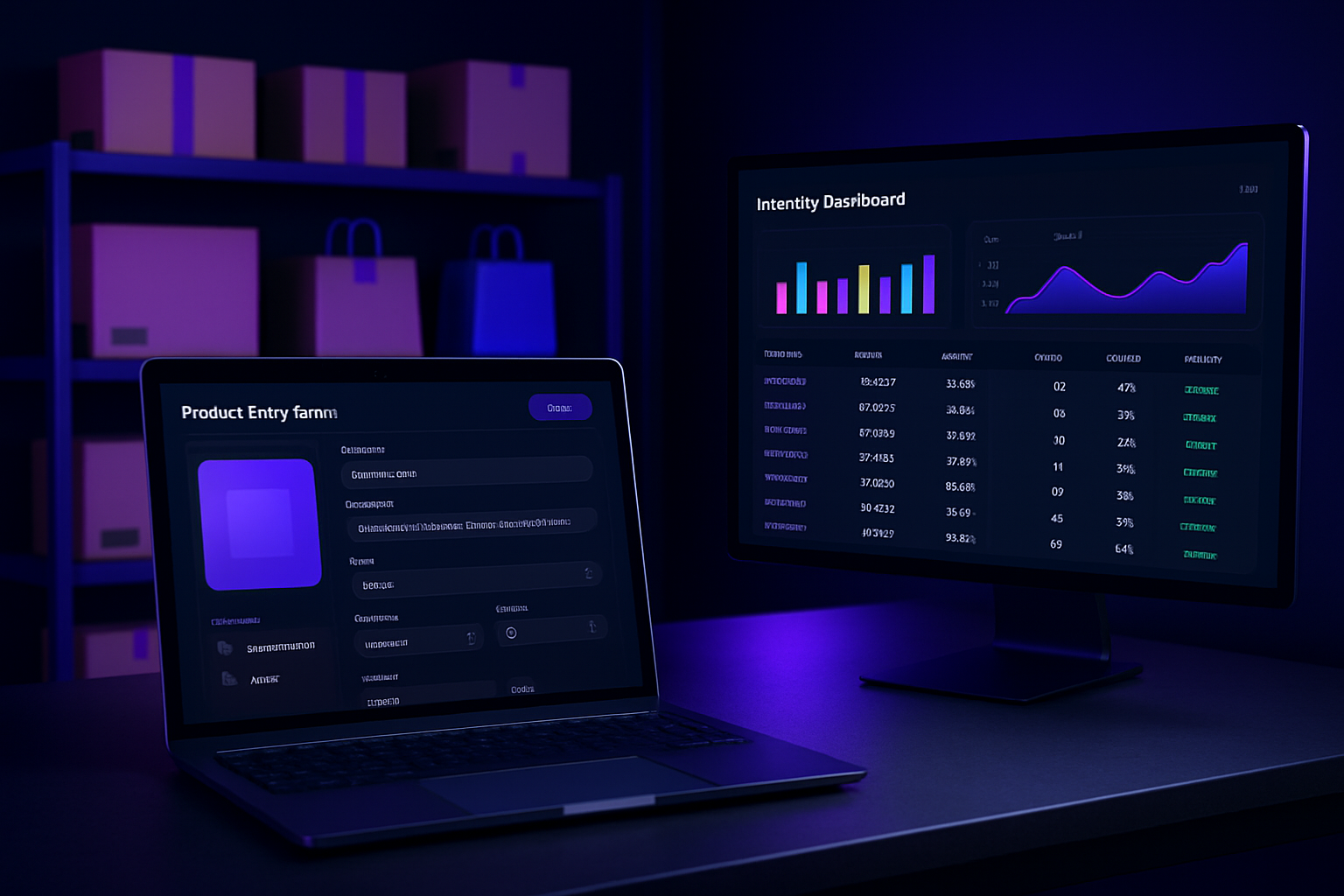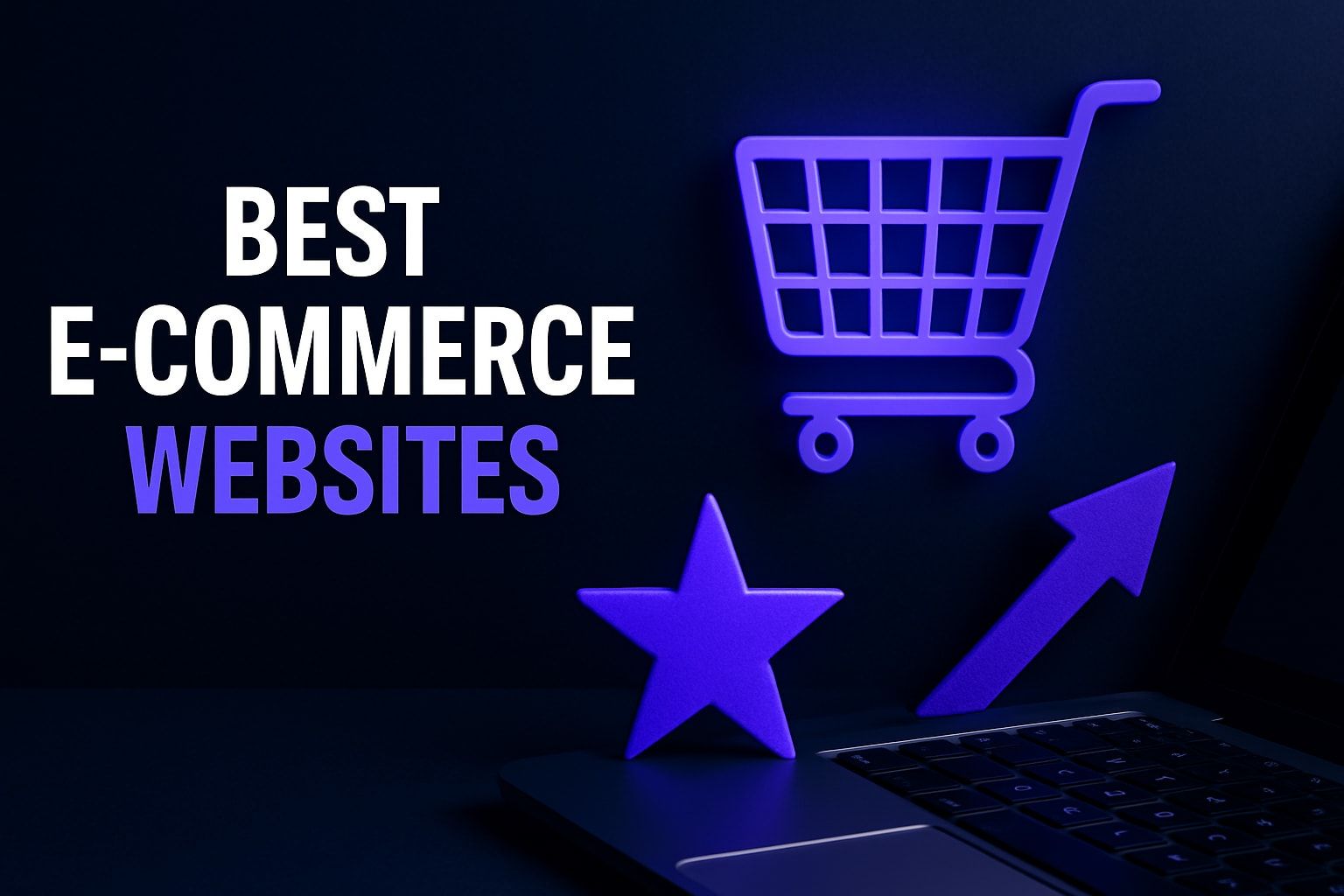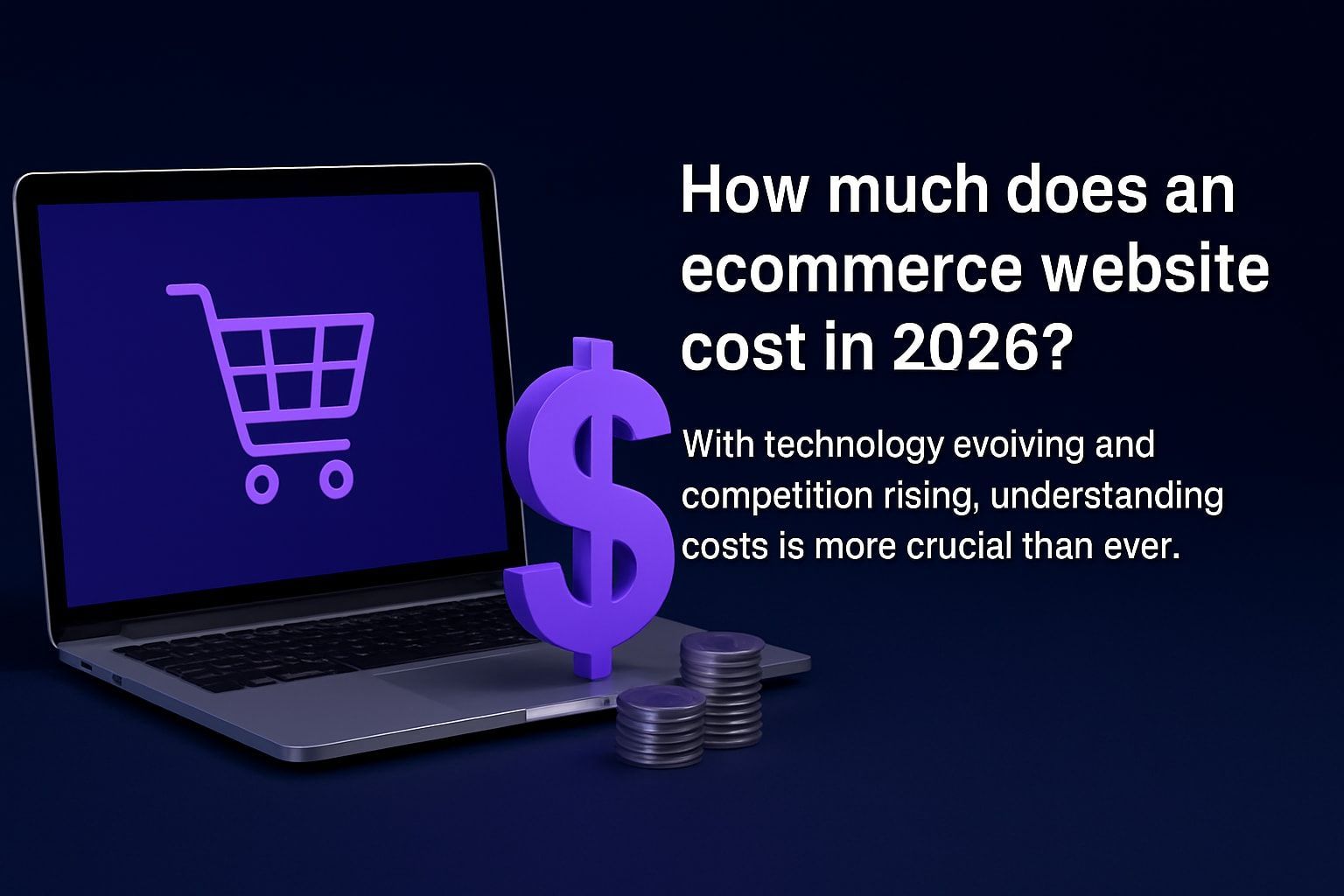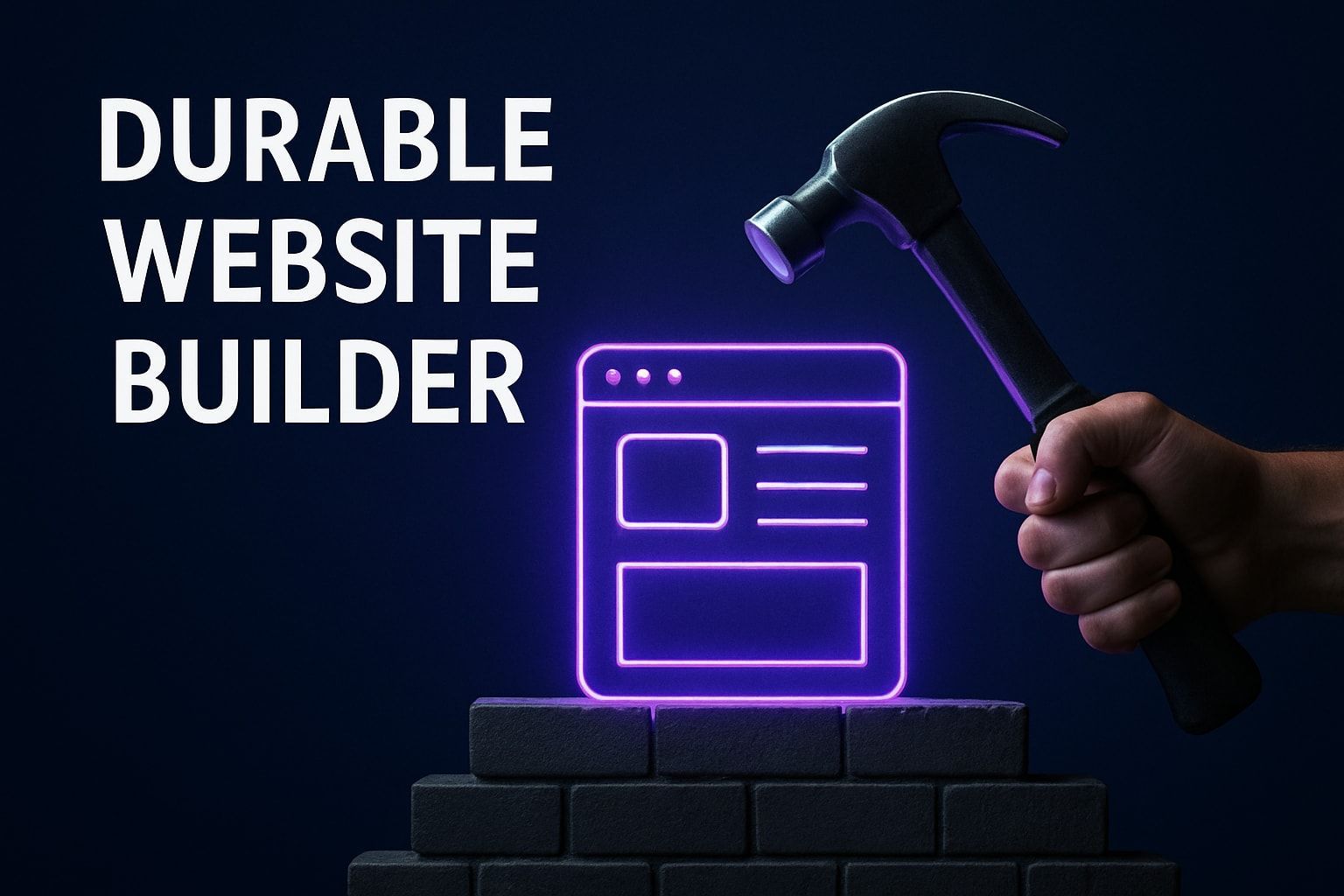Step-by-Step Guide to Create Your Own Ecommerce Website 2025
Ecommerce is booming, opening doors to incredible opportunities for entrepreneurs in 2025. If you want to capitalize on this growth, it’s crucial to learn how to create your own ecommerce website using the latest tools and strategies. This step-by-step guide will walk you through everything you need—from planning and selecting the right platform, to designing, launching, and optimizing your site for growth. Discover how easy and profitable it can be to start your online store. Ready to unlock your potential? Dive in and follow this guide to build your ecommerce success story.
Step 1: Planning Your Ecommerce Business
Before you create your own ecommerce website, a solid plan is the foundation for sustainable growth. As global ecommerce sales are projected to reach $6.86 trillion in 2025 (source), the competition is fierce. Careful planning helps you identify the right opportunities, avoid costly mistakes, and set your online store up for long-term success.

Defining Your Niche and Target Audience
The first step to create your own ecommerce website is choosing a niche that aligns with your interests and market demand. Conduct in-depth market research using tools like Google Trends and social listening platforms to spot profitable and trending niches in 2025.
Develop detailed buyer personas by outlining your ideal customer’s age, location, interests, and shopping habits. Analyze competitors to uncover market gaps and opportunities. For example, observing customer reviews on competitor sites can reveal pain points your store could solve. The more specific your target audience, the easier it is to tailor your offerings and marketing.
Setting Business Goals and Objectives
Clear, measurable goals are vital as you create your own ecommerce website. Start by setting short-term targets, like reaching your first 100 sales, and long-term objectives, such as scaling to a certain revenue milestone.
Break down your goals into actionable steps. For instance, if your goal is to increase traffic, decide on specific tactics like SEO or paid ads. Make sure your website features—such as product filtering or fast checkout—align with these objectives. Regularly review and update your goals to stay focused and motivated.
Deciding on Products and Inventory Model
Choosing the right products and inventory model is crucial when you create your own ecommerce website. Decide between dropshipping, print-on-demand, self-fulfillment, or a hybrid approach. Each has unique pros and cons:
- Dropshipping: Low upfront investment, but less control over shipping.
- Print-on-demand: Great for custom products, but slower fulfillment.
- Self-fulfillment: Full control, but requires inventory management.
- Hybrid: Combines flexibility, but adds complexity.
Source products from reliable manufacturers, wholesalers, or even create handmade goods. Evaluate which model best fits your resources and business vision.
Legal and Financial Considerations
To create your own ecommerce website legally and securely, register your business and select an appropriate structure (LLC, sole proprietorship, etc.). Understand ecommerce tax rules for 2025, including sales tax obligations for different regions.
Open a dedicated business bank account and choose accounting software to track expenses and revenue. Staying compliant protects your business and builds customer trust. Consult with a legal or financial advisor if you’re unsure about any requirements.
Example Planning Checklist
Organize your planning process with a simple checklist:
- Define your niche and target audience
- Conduct market and competitor research
- Set clear business goals and KPIs
- Choose your product sourcing and inventory model
- Register your business and address legal requirements
- Set up banking and accounting tools
Remember, in 2024, over 26% of small businesses failed due to poor planning (industry reports). Taking time to plan carefully gives you the best chance to succeed when you create your own ecommerce website.
Step 2: Choosing the Right Ecommerce Platform
Selecting the best platform is a pivotal step as you create your own ecommerce website. With so many options available, choosing wisely can save you time, money, and frustration down the road.
Key Features to Look For in 2025
Before you create your own ecommerce website, make a checklist of essential features. In 2025, mobile optimization is non-negotiable. Your platform should offer responsive design, ensuring a seamless experience on any device.
Look for built-in SEO tools that help you rank higher in search results. Core Web Vitals compliance is now a baseline for user experience and Google rankings. Integration with payment gateways and shipping carriers is critical for smooth operations.
Don’t forget about scalability. As your business grows, your platform should easily handle more products, traffic, and sales channels. Security features like SSL and PCI compliance protect your customers and build trust.
Comparing Popular Ecommerce Platforms
When you create your own ecommerce website, comparing platforms side-by-side is essential. Shopify, WooCommerce, BigCommerce, Magento, Wix, and Squarespace all have strengths and weaknesses. For a detailed breakdown, check out this Comprehensive comparison of top eCommerce platforms for 2025.
Here’s a quick snapshot:
| Platform | Best For | Key Strengths | Considerations |
|---|---|---|---|
| Shopify | Beginners, SMBs | Ease of use, scalability | Monthly fees |
| WooCommerce | WordPress users | Flexibility, open source | Requires hosting |
| BigCommerce | Growing brands | Built-in features | Fewer themes |
| Magento | Large enterprises | Customization | Complex setup |
| Wix | Small stores | Drag-and-drop builder | Limited scalability |
| Squarespace | Creatives | Design, ease of use | Fewer ecommerce tools |
Evaluate which platform aligns with your business goals and budget.
AI-Powered and No-Code Solutions
The rise of AI-driven tools is transforming how you create your own ecommerce website. AI-powered website builders can generate layouts, suggest content, and even optimize product pages automatically.
No-code solutions with drag-and-drop editors make it easy for anyone to launch an online store—no technical skills needed. These tools can reduce build time by up to 50%, letting you focus on growing your business.
A recent case study showed that entrepreneurs using AI builders launched stores in days instead of weeks. This means you can adapt faster to market trends and customer demands.
Budgeting for Your Platform
Budget is a key factor as you create your own ecommerce website. Platforms often charge monthly subscriptions, transaction fees, or costs for add-ons.
Calculate your total cost of ownership (TCO) for the first year. Don’t forget expenses like themes, apps, and payment processing fees. For example, the average startup cost for an ecommerce platform in 2025 ranges from $500 to $2,500, depending on features and scale.
Plan your budget carefully to avoid surprises and ensure your store remains profitable from the start.
Building with Avantiy: An AI-Powered Approach
Avantiy offers a powerful way to create your own ecommerce website, leveraging AI for a streamlined experience. Its drag-and-drop editor and customizable templates make professional design accessible to everyone.

You’ll benefit from built-in SEO tools, seamless payment gateway integration, and marketing app connections. Avantiy is free to start, with costs only when you publish.
Over 20,000 businesses trust Avantiy for rapid, professional ecommerce launches. If you want a fast, modern, and easy solution, this AI-powered platform deserves your attention.
Step 3: Designing Your Ecommerce Website
Design is where your vision comes to life. If you want to create your own ecommerce website that attracts and converts, you need more than just good looks—you need a site built for usability, trust, and sales. In this step, we’ll break down how to turn your ideas into a powerful online storefront.

Selecting and Customizing Your Theme
The foundation when you create your own ecommerce website is the theme. A professional, conversion-focused design builds credibility and ensures visitors feel confident buying from you.
Start by exploring pre-built templates, which save time and provide proven layouts. Custom designs offer more flexibility but require more resources. For most, starting with customizable templates is ideal. Make sure your theme is mobile responsive and accessible to all users.
Want inspiration? Browse the Ecommerce website templates gallery to see modern, customizable designs that fit every brand style and business type.
Branding and User Experience (UX)
Strong branding is essential when you create your own ecommerce website. Consistency in your logo, color palette, and typography creates a memorable impression and builds trust.
User experience matters just as much. Craft intuitive navigation so visitors find what they need quickly. Ensure your homepage and landing pages are engaging, with clear calls to action and easy-to-read layouts.
A simple branding checklist:
- Consistent logo and colors
- Readable fonts
- Clear navigation menu
- Compelling homepage visuals
These elements help transform casual browsers into loyal customers.
Essential Ecommerce Pages and Features
To create your own ecommerce website that converts, include all essential pages and features. Start with product pages—use high-quality images, detailed descriptions, and customer reviews to build trust.
Don’t forget shopping cart and checkout pages. Make the process smooth and distraction-free. Add core informational pages such as About Us, Contact, FAQ, and clear policy pages for returns and privacy.
Must-have features:
- Product filters and categories
- Secure shopping cart
- Guest checkout option
- Visible trust badges
These essentials ensure shoppers have everything they need to make a purchase decision.
Optimizing for Speed and Performance
Site speed can make or break your ability to create your own ecommerce website that converts. Studies show 53% of mobile users abandon sites that take over 3 seconds to load.
Use tools like Google PageSpeed Insights to analyze performance. Compress images and use a content delivery network (CDN) to serve assets quickly. Optimize code and minimize plugins to keep things lean.
Quick optimization checklist:
- Compress all images
- Leverage browser caching
- Use fast, reliable hosting
- Minimize third-party scripts
Fast load times keep shoppers engaged and improve your conversion rates.
Accessibility and Compliance
When you create your own ecommerce website, accessibility isn’t optional. Your site must be usable for people with disabilities and comply with global standards like ADA.
Use tools to audit your website for contrast, alt text, and keyboard navigation. Make sure your design works well for screen readers and mobile devices.
Accessibility tips:
- Add alt text to images
- Ensure color contrast meets guidelines
- Enable keyboard navigation
- Test with accessibility tools
Inclusive design helps you reach more customers and builds a reputation for care and professionalism.
Step 4: Adding Products and Managing Inventory
Adding products and managing inventory is a pivotal stage when you create your own ecommerce website. This step shapes your store’s first impression, impacts conversions, and sets the foundation for seamless operations. Let’s break down the essentials to ensure your store is ready for growth.

Creating Compelling Product Listings
To successfully create your own ecommerce website, focus on product listings that captivate and convert. Start by crafting persuasive, benefit-driven product titles and descriptions. Use high-resolution images and short product videos to showcase every angle and feature.
Organize products into logical categories and use filters, making it easy for shoppers to browse. Highlight unique selling points in bullet lists to grab attention. Include keywords naturally in titles and descriptions for better search visibility.
Don’t forget to add trust signals, like stock indicators or shipping badges, to reassure buyers. These details help you stand out in a crowded 2025 marketplace.
Setting Up Inventory Management
Efficient inventory management is crucial as you create your own ecommerce website. Utilize real-time stock tracking tools to avoid overselling or running out of popular items. Integrate with inventory management solutions like Zoho Inventory for automated alerts and streamlined workflows.
Assign unique SKUs to each product, and manage variants or bundles with clear labeling. This organization prevents errors and simplifies reordering. For a deeper dive into inventory tools and seamless product management, the Ecommerce website solutions overview provides insights into all-in-one ecommerce features.
A well-structured inventory system saves time and keeps your store running smoothly as sales grow.
Pricing Strategies for 2025
When you create your own ecommerce website, pricing plays a critical role in attracting and retaining customers. Embrace dynamic pricing models that automatically adjust based on demand, seasonality, or competitor activity.
Leverage AI-powered pricing tools to monitor the market and suggest optimal prices. Keep an eye on your competitors and adjust accordingly, ensuring your offerings remain competitive. Incorporate psychological pricing, such as pricing items at $19.99 instead of $20, to encourage purchases.
Regularly review your pricing strategy and use analytics to identify which models drive the highest conversion rates. Adapt quickly to market trends for maximum profitability.
Leveraging Customer Reviews and Ratings
Social proof is a game-changer when you create your own ecommerce website. Encourage buyers to leave reviews and ratings on product pages. Make the process simple by sending automated post-purchase emails asking for feedback.
Display user-generated content, like customer photos and testimonials, to build trust and authenticity. Moderate reviews to ensure quality and respond to feedback, showing that you value your customers’ opinions.
Stores that showcase reviews often see conversion rates up to three times higher, according to industry studies. Prioritizing reviews not only boosts credibility but also encourages new shoppers to make confident purchase decisions.
Step 5: Setting Up Payments, Shipping, and Taxes
Getting your store ready for real transactions is a vital milestone as you create your own ecommerce website. In 2025, seamless payment, shipping, and tax processes are more important than ever, especially as US eCommerce sales projected to reach $1.29 trillion by 2025. Let’s break down exactly how to set up these core functions, so your store is ready for growth.
ntegrating Payment Gateways
To create your own ecommerce website that converts, offering multiple secure payment options is essential. Start by selecting trusted providers such as Stripe, PayPal, and Apple Pay. These gateways process transactions efficiently and support various currencies for international customers.
Security is non-negotiable. Ensure your platform is PCI compliant and uses SSL certificates to protect sensitive data. Most ecommerce platforms have built-in integrations, making setup straightforward. Don’t forget to test your checkout process thoroughly to guarantee smooth payments.
Supporting local payment methods can also boost conversions. Research which options your target audience prefers, especially if you’re selling globally. Providing a frictionless payment experience will help build trust and drive more sales as you create your own ecommerce website.
Configuring Shipping Options
Shipping is a critical factor in customer satisfaction and retention. When you create your own ecommerce website, leverage real-time carrier integrations with services like UPS, FedEx, and DHL. These integrations allow customers to track orders and see accurate shipping costs at checkout.
Offer a mix of flat-rate, free shipping, and local delivery options to appeal to different buyer preferences. Free shipping can be a strong incentive to increase average order value. Always display shipping costs clearly to avoid surprises, which can cause cart abandonment.
Calculating precise shipping rates is easier with built-in calculators or third-party apps. Consider automating label printing and order tracking for efficiency. By optimizing shipping, you’ll improve the customer experience and enhance your store’s reputation.
Managing Taxes and Compliance
Tax rules evolve quickly, so it’s vital to stay compliant as you create your own ecommerce website. Start by determining where you need to collect sales tax—this may be based on your business location and where your customers reside.
Modern ecommerce platforms often include automated tax calculation tools. These can handle region and country-specific rates, reducing manual errors. Pay special attention to digital goods and cross-border transactions, as 2025 brings updated regulations in many markets.
Document all taxable sales, and consider consulting an accountant for complex scenarios. Keeping tax compliance automated and up-to-date will protect your store from costly penalties and keep your operations running smoothly.
Handling Returns and Customer Policies
A clear, fair return policy is a must-have when you create your own ecommerce website. Research shows that 67% of customers check return policies before making a purchase, so transparency here builds trust.
Outline eligibility, time frames, and the process for returns and refunds on a dedicated page. Automate returns management where possible, using built-in platform tools or third-party apps to streamline the process.
Provide responsive customer support for any return-related questions. A hassle-free returns experience not only boosts conversion rates but also encourages repeat business. Remember, a customer-friendly policy can set your store apart in a crowded market.
Step 6: Launching and Marketing Your Ecommerce Website
Launching is when your hard work finally becomes visible to the world. But the real journey begins as you market and optimize your store for success. To create your own ecommerce website that stands out in 2025, you need a strategic, step-by-step approach for launch and promotion.
Pre-Launch Checklist
Before you create your own ecommerce website and open it to customers, thorough testing is your safety net. Double-check every function to ensure a seamless shopping experience.
- Test the entire checkout flow for errors.
- Ensure your site is fully mobile-responsive.
- Verify cross-browser compatibility.
- Set up analytics tools like Google Analytics 4 and heatmaps.
- Review all product listings and images for accuracy.
A well-prepared pre-launch checklist helps you spot issues early, giving your launch the best chance for success.
SEO Optimization for Ecommerce
If you want shoppers to find your store, optimizing for search engines is essential. When you create your own ecommerce website, focus on on-page SEO: write engaging meta titles, use schema markup, and create an XML sitemap.
Google now prioritizes Core Web Vitals and mobile-first experiences, so your site must load quickly and look great on every device. Did you know 43% of ecommerce traffic comes from organic search? For advanced strategies, check out these SEO tips for ecommerce websites to help you climb the rankings.
Content Marketing and Blogging
Content is your secret weapon to create your own ecommerce website that builds trust and attracts traffic. Start a blog with product guides, how-to articles, and customer stories.
Offer valuable insights that help shoppers make decisions. Integrate your blog with email marketing tools to nurture leads automatically. The more helpful your content, the more likely visitors are to become loyal customers.
Social Media and Influencer Marketing
Social platforms are where your audience hangs out. When you create your own ecommerce website, choose channels that fit your niche—Instagram, Facebook, TikTok, or Pinterest.
Run targeted ad campaigns to reach new buyers and set up retargeting to bring back window shoppers. Partner with influencers who align with your brand for authentic promotion. Their word-of-mouth can boost credibility and drive sales.
Email Marketing and Automation
Grow your list right from the start. Use popups and lead magnets to collect emails when people visit your store. To create your own ecommerce website that converts, set up automated flows like abandoned cart reminders and personalized post-purchase messages.
Personalization is key: tailor your emails based on customer behavior and preferences. Automation saves time and keeps your audience engaged, even as your business scales.
Leveraging Reviews and Social Proof
Trust is everything online. Encourage customers to leave reviews after each purchase. Stores that showcase reviews and user-generated content convert up to three times higher.
Feature testimonials prominently across your site and social channels. To create your own ecommerce website that builds instant credibility, integrate real customer photos and stories. Shoppers trust their peers more than any ad.
Monitoring and Improving Your Launch
Your work isn’t done after launch. Actively gather feedback from customers to spot areas for improvement. Use analytics to track sales, traffic, and funnel bottlenecks.
Stores that iterate after launch grow 30% faster. To create your own ecommerce website that’s built for long-term growth, make continuous improvements based on real data and insights.
Step 7: Optimizing and Scaling Your Ecommerce Business
Optimizing your store is the key to lasting success as you create your own ecommerce website. Once your site is live, the real growth begins. Smart business owners keep refining, measuring, and adapting to maximize performance and stay competitive.
Analyzing Performance Metrics
Tracking the right data helps you understand what’s working and what needs improvement as you create your own ecommerce website. Set up dashboards to monitor these key metrics:
| Metric | What It Tells You |
|---|---|
| Conversion Rate | % of visitors who buy |
| Average Order Value | Average spend per transaction |
| Customer Lifetime Value | Total value of each customer |
| Bounce Rate | % who leave after one page |
| Cart Abandonment Rate | % who leave items in cart |
Regularly review these stats to spot trends and identify quick wins.
Conversion Rate Optimization (CRO)
Small tweaks can lead to big gains in sales when you create your own ecommerce website. Run A/B tests on product pages and checkout flows to find what resonates with your audience. Try different headlines, images, and call-to-action buttons.
Improving user experience is essential for boosting conversions. For a deeper dive into the importance of user experience in eCommerce design, check out this Importance of user experience in eCommerce design.
Consider adding live chat or support widgets to answer questions in real time.
Expanding Sales Channels
Growth means reaching shoppers wherever they are. As you create your own ecommerce website, integrate with major marketplaces like Amazon, eBay, and Etsy. Social commerce is booming, so set up Instagram and Facebook shops for a seamless shopping experience.
Omnichannel marketing connects your store, social, and marketplaces, letting customers buy on their terms.
Automating Operations and Marketing
Automation frees up time to focus on scaling after you create your own ecommerce website. Use tools to handle inventory, order processing, and customer service. Set up email and SMS automations for abandoned carts and post-purchase follow-ups.
Marketing automation platforms can personalize offers, segment lists, and trigger campaigns based on customer behavior.
Scaling with Advanced Features
Take your store to the next level with advanced features:
- Add loyalty programs and memberships to boost repeat purchases.
- Offer subscriptions for recurring revenue.
- Use upselling and cross-selling to increase average order value.
- Personalize product recommendations with AI.
These strategies can help you stand out and keep customers coming back.
Staying Ahead of Ecommerce Trends in 2025
Ecommerce is evolving fast. Stay agile by adopting new technologies like AI, AR/VR, and chatbots. Follow industry news to spot trends early. Invest in continuous learning to keep your skills sharp and your business future-proof.
The journey to create your own ecommerce website doesn’t end at launch. Ongoing optimization and innovation are your best tools for long-term success.
You’ve seen how easy it can be to turn your ecommerce idea into a thriving online business—especially with the right tools and steps. Whether you’re planning your store, choosing the perfect platform, or adding those finishing touches, remember that you don’t need to code or wait weeks to launch. With intuitive AI-powered editors, customizable templates, and built-in SEO, you can have a professional, mobile-friendly store up and running fast. Why wait to turn your vision into reality?
Start Building Your Website Today and see how simple your ecommerce journey can be!
Start building your new website today
No credit of debit card required start building today




